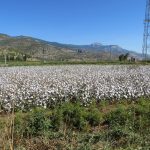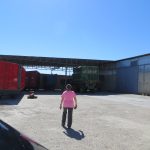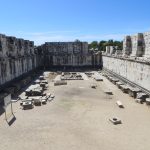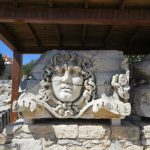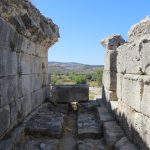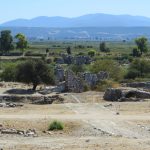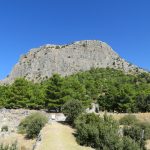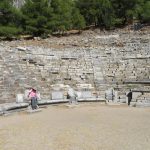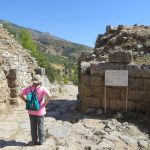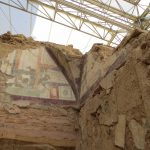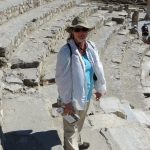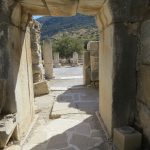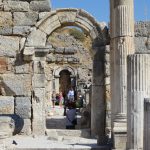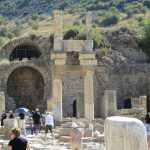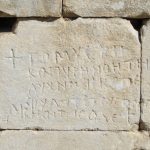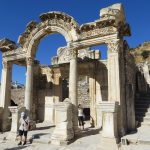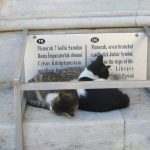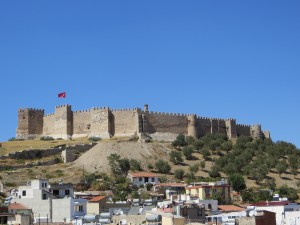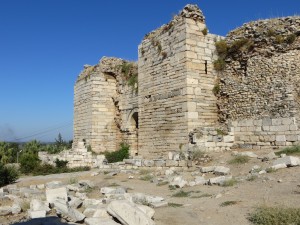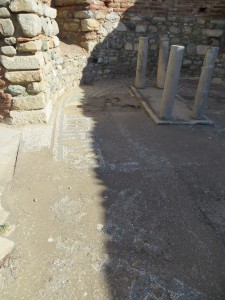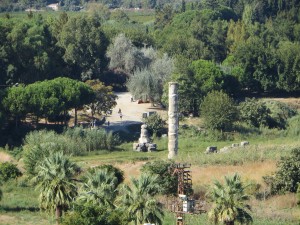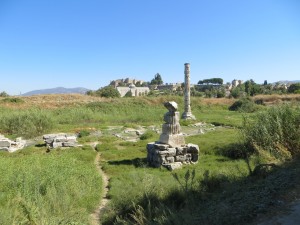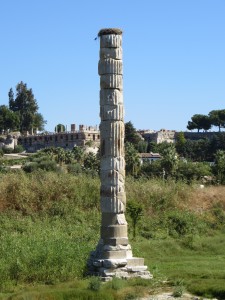We took the train from Selcuk to Denizli at a cost of 14.50 Turkish Lira each. The ride was around 3 hours but the scenery from the train was very nice. Once we arrived at Denizli, we took a dolmus to Pamukkale.
The travertine terraces at Pamukkale were “formed when water from the hot springs loses carbon dioxide as it flows down the slopes, leaving deposits of limestone. The layers of white calcium carbonate, built up in steps on the plateau, have earned the name of Pamukkale (cotton castle).” (DK Eyewitness Travel, Turkey).
Cost to enter the travertine pools was 20 T.L. each – same cost as Ephesus without the Terrace Houses. But this is a World Heritage site and I’m amazed people are still allowed on parts of it.
After entering, you must remove your shoes – even if they are soft-soled water shoes. I’m sure this is an attempt to hold down wear and tear on the travertine, but my gosh it is hard on the feet! Like walking on shells. We quickly determined that the whitest color travertine is the smoother than the other colors.
We waded through pools up to knee deep on the very steep climb to the top. Pro tip – wear a bathing suit! Both of us slipped and fell numerous times.
We made it to the top!
Hierapolis
We made a strategic error here – we left the guidebook at the hotel and didn’t realize that the ruins of Hierapolis were at the top of the terraces. Serious mistake! I put my water shoes on, but soon had blisters and hot spots from walking in them. Very much regretted not having good shoes with me.
Sadly, we didn’t know that the pool associated with the Temple of Apollo was over the hill until after we were back at the hotel.
We didn’t spend a lot of time here since we weren’t prepared for a lot of walking. I would advise taking a taxi to the ruins, wander around, then change into a bathing suit and walk down the terraces back to town.
We initially planned to spend 2 nights here but we saw everything we wanted to see in one afternoon and only stayed the one night.
















